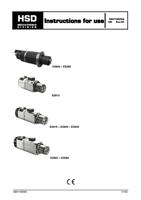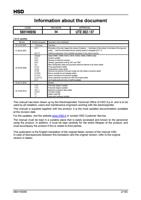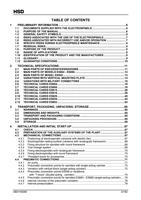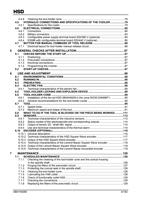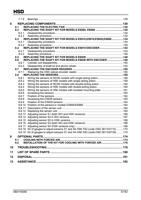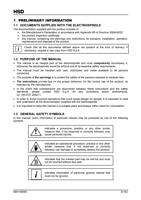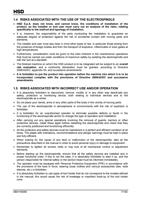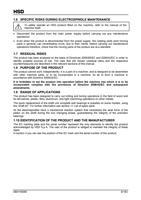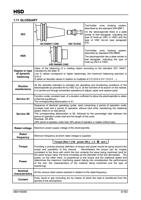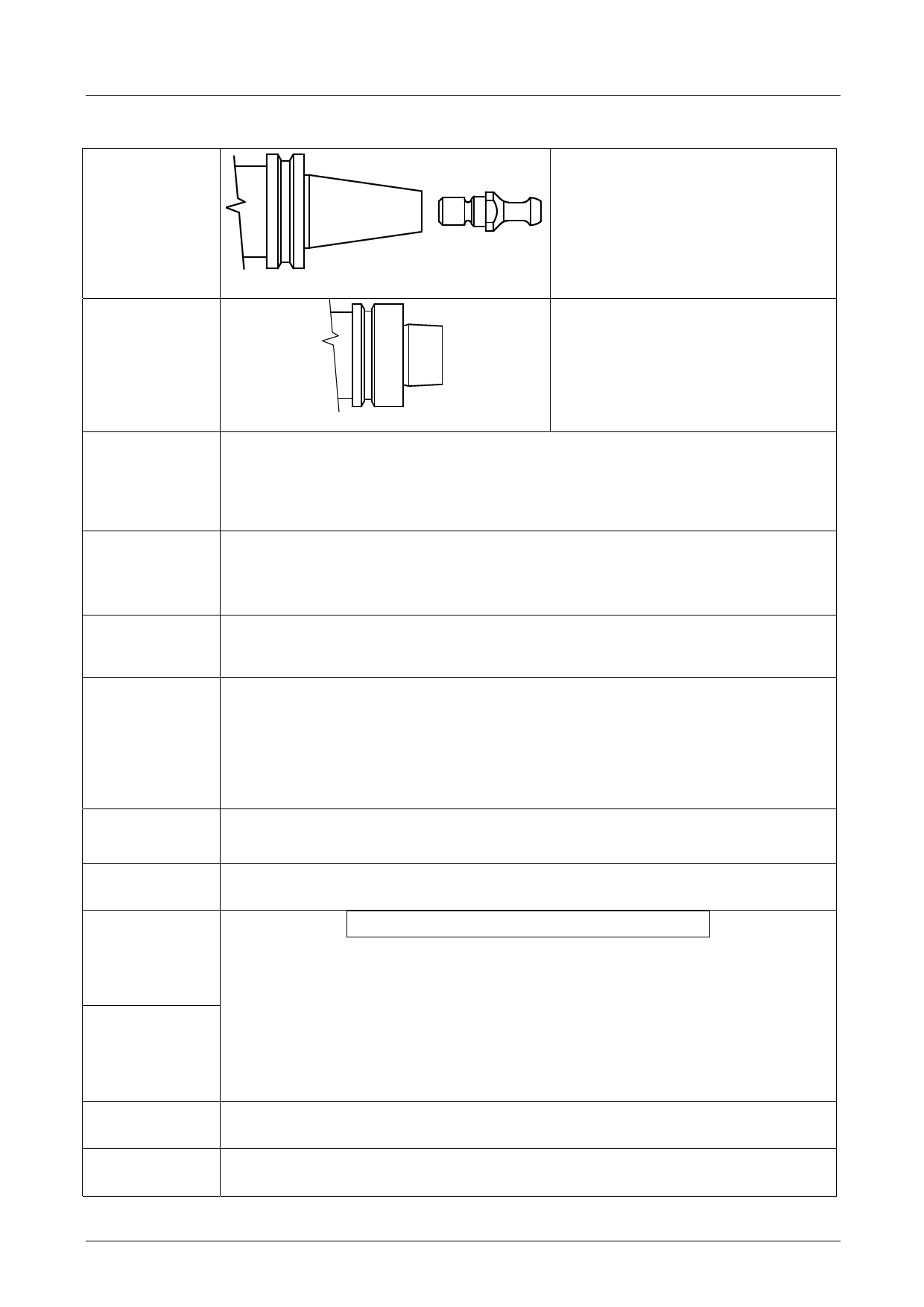
HSD
1.11 GLOSSARY
ISO
ISO DIN69871 CONE
HSD TIE-ROD
Tool-holder cone hooking system,
described by the standard DIN 69871.
On the electrospindle there is a plate
similar to that alongside, indicating the
type of hook-up (ISO or HSK) and the
type of HSD tie-rod (see paragraph
6.6).
HSK
Degree or type
of dynamic
balancing
Tool-holder cone hooking system,
described by standard DIN 69893.
HSK DIN69893 CONE
The electrospindle has a plate similar to
that alongside, indicating the type of
hook-up (ISO or HSK).
Value of the balancing of a rotating object according to the standard ISO 1940/1,
indicated by the letter G.
Low G values correspond to higher balancings; the maximum balancing precision is
G=0.4.
G takes on discrete values in relation to multiples of 2.5 (G=0.4 G=1 G=2.5 …).
Routine
maintenance
All the activities intended to maintain the operating and functioning conditions of the
electrospindle as provided for by HSD S.p.A. at the moment of its launch on the market;
it is carried out through scheduled operations to adjust, repair and replace parts.
Service S1
Service S6
Function under constant load, of a duration sufficient to allow the electrospindle to attain
a thermal equilibrium.
The corresponding abbreviation is S1.
Sequence of identical operating cycles, each comprising a period of operation under
constant load and a period of operation without load while maintaining the rotational
speed; there is no rest period.
The corresponding abbreviation is S6, followed by the percentage ratio between the
period of operation under load and the length of the cycle.
Example: S6 40%.
(40% period of operation under load, 60% period of operation in rotation without load).
Rated voltage Maximum power supply voltage of the electrospindle.
Rated
frequency
Minimum frequency at which rated voltage is supplied.
..Torque (Nm) = [ 60 · power (W) ] : [ 2 · · rpm ]..
Torque
Power
Providing a precise physical definition of torque and power would be going beyond the
scope and possibility of this manual. Nevertheless the torque can be roughly
correlated to the force with which the tool contacts the piece being machined (and for
the same torque value, the force increases as the diameter of the tool decreases). The
power, on the other hand, is proportional to the torque and the rotational speed and
determines the maximum machining speed (taking into consideration the performance
of the tool, the characteristics of the material being machined and the type of
machining).
Nominal
characteristics
All the various rated values reached in relation to the rated frequency.
Coolant
Fluid, liquid or gas (including air) by means of which the heat is transferred from the
spindle to the atmosphere.
5801H0056 ________________________________________________________________ 9/183

